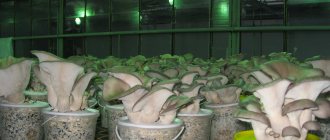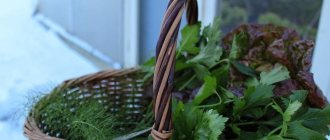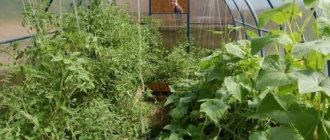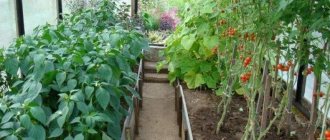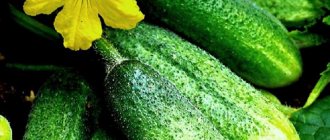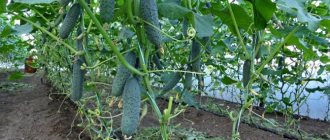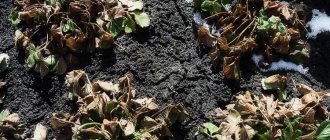Winter is the time when the body needs fresh greens most. Of course, you can buy it in the supermarket, but you can only guess what quality it is and what its price is. Therefore, it will be easier for owners of private houses to grow the desired types of plants in a greenhouse. The growing season is quite short, and the greens are quite resistant to temperature changes. Getting a good harvest is not difficult. It is enough to follow the basic rules of planting and care.
How to prepare soil in a greenhouse in the fall
To begin, thoroughly clean the soil of roots, remnants of the upper parts of plants, seeds and pest larvae. Of course, general general cleaning of the greenhouse will also be required. Treat or completely renovate disease-infested areas as necessary. Next, you need to prepare the soil - loosen it, apply fertilizer, take care of lighting and insulation of the beds for growing in a greenhouse in winter. Check the reliability of the frame, strengthen weak beams and connections. The structure must withstand even in the event of strong winds or heavy snowfall.
Conservation of garden equipment
November is the time to put away garden tools and equipment for storage, so before frost sets in you need to:
- drain water from storage tanks, carry out sanitary and anti-corrosion treatment;
Place iron barrels on their sides
- shut off the water supply outside and in cold rooms;
- store flexible hoses, preferably in a heated garage or cellar, to avoid cracking;
- wash and put away all garden tools;
- clean the melt water drainage ditches from debris and leaves.
Garden tools need to be washed and put away
Note! At the end of November, after the start of snowfalls, it is necessary to ensure that snow does not accumulate on the roofs of greenhouses and greenhouses and to remove it in a timely manner.
Cleaning the greenhouse roof from snow
Gardener's calendar for October
In October, only cold-resistant crops remain in the garden beds. They need to be removed before the onset of severe frosts, stored or recycled. It is also necessary to carry out autumn tillage of the soil - digging, loosening, sowing green manure. Read this article for more details.
Following these simple rules and recommendations will allow your plants to easily overwinter and enter the new season strong and healthy.
Growing greens in a greenhouse in winter
It is most convenient to grow greens in a winter greenhouse in boxes on shelves. Plants do not take up much space, it is convenient to harvest portions, and over time you will learn to further compact the crops, increasing the yield from each box.
Bow on feather
One of the most popular and useful plants that can withstand winter weather is onions.
Before planting, the onions sorted by size need to be trimmed and soaked a little in warm water. Then we immediately plant it in the ground at a short distance and deepen it. Onions are not picky about soil: if the soil is initially of good quality, it does not need to be fed. Special lighting is also not required, natural lighting is sufficient.
Salad
Planting lettuce in a greenhouse differs depending on the type of plant.
Leaf lettuce is sown in a 6x6 pattern or in rows with intervals of 10 cm. This distance is sufficient for the development of leaves, and they will not crowd each other.
Head lettuce is sown with seeds or seedlings according to the same principle as leaf lettuce, but with a larger distance between rows - 20-25 cm.
You can also plant ready-made seedlings in the greenhouse. This method is chosen if the greenhouse is not heated, and you want to get the first harvest in the spring.
Dill
Dill is an undemanding crop in terms of growing conditions. It grows well both between the rows of main crops and separately in containers and boxes. The culture is cold-resistant, so it can be placed closer to the doors of the greenhouse. The main thing is to maintain the temperature around 15-18°C. Additional lighting is required only when placing containers with plants on racks on the lower shaded shelves.
Parsley
Parsley has a long pre-emergence period from 30 to 45 days. To reduce it, it is recommended to sow seeds that have been previously germinated for 5 days in damp gauze. On the 10th day, seeds sprouted in the soil are transferred to a room with a temperature of +1 °C. This hardening off procedure increases the growth of greenery three times compared to conventional sowing.
Over the winter, up to 5 harvests of parsley can be harvested in a greenhouse.
Where to sell the products?
One of the most important issues that worries entrepreneurs taking their first steps in small business is the issue of logistics and product sales.
In addition to the benefits brought to the owner by the abundance of vitamins on the table in winter, it should please the financial income of the budget. Therefore, before starting construction, it is recommended to get acquainted with the administration of retail outlets within the scope of possible export of products, discuss with them supply options, sales volumes and the likelihood of receipt of similar goods. You should negotiate the price of the product (you need to take into account the fact that the store will sell the product at a premium) and find a happy medium with the distance (otherwise all the profit will go as transportation costs).
If you plan to sell large volumes of products to resellers, then they prefer shelf-stable goods, for example, tomatoes.
It is easier to sell parsley, lettuce, radishes, strawberries, and popular seedlings in April-May through retail trade.
The farther the greenhouse is located from possible points, the more “perishable” products should be preferred. This type of business will be doomed to failure if you live in the suburbs of a large metropolis or in a very remote taiga area.
Beginners in this business are advised to choose the easiest way to sell - through a supermarket. If there is someone in your neighborhood who is already doing this, it would be good to know their product range - to avoid unhealthy competition, it is better to deal with different crops.
Growing vegetables in winter in a greenhouse
Compared to greens, growing vegetables in a greenhouse in winter is a much more complex process, since fruit-bearing plants are more demanding in terms of lighting and proper care. However, there are crops whose varieties do well when grown in a greenhouse in winter.
Tomatoes
In order for tomatoes to grow and bear fruit well in a greenhouse in winter, the following conditions must be met:
- The air temperature should reach +25, and the soil should warm up to +20.
- Watering the plants is carried out when the soil is almost dry, in the first half of the day, so that condensation does not accumulate.
- Before fruiting begins, be sure to remove excess leaves every week.
Chilli
Chili peppers grow well in greenhouses at temperatures around 16-18°C. The plant should be located in a well-lit area; additional illumination with phytolamps is recommended. Tall plants should be staked. Fertilizing is carried out weekly after the fruits appear and before harvesting.
cucumbers
Cucumbers are a heat-loving crop that does not tolerate dry air. Therefore, these vegetables grow best in winter greenhouses heated using a water heating system. In this case, the air will not need to be additionally humidified and the plant leaves will not need to be sprayed.
Suitable cucumber varieties for winter cultivation should be shade-tolerant, parthenocarpic, and resistant to infections and diseases. It is also good to choose varieties with a genetic predisposition to sparse branching.
Microgreen
Many gardeners believe that only crops that usually grow in open ground can be grown in a winter greenhouse, and therefore completely forget about microgreens. Microgreens are no different from conventional plants in terms of taste and beneficial properties. You can grow radishes, arugula, mustard, red cabbage and cilantro in pots all winter long.
Ginger
Ginger also grows well in a greenhouse, although it is recommended to equip a terrarium for it with a height of 60 cm. In containers with ginger, you need to make many holes through which excess water will drain. The plant also needs to be illuminated with phytolamps for up to 16 hours a day.
Garden, fruit trees and shrubs
The main gardening work in November is related to protecting plantings from pests, rodents and adverse weather conditions. Also in November you can start preparing cuttings for spring grafting.
Lunar calendar for November 2022
Step 1. If in October you did not spray the fruit trees against insect pests and diseases, this can be done in early November, but provided that the temperature outside is still above zero.
Spraying trees and shrubs
Using a sprayer, spray the solution on the tree crown, trunk and skeletal branches, as well as the soil in the tree trunk circle. It is better to do this on a clear day without strong wind. Spraying is carried out with one of the compositions indicated in the table.
Table 1. Preparations for treating fruit trees in November.
| A drug | Concentration, g/l water | Application |
| Urea (urea) | 50-70 | Insect pests |
| inkstone | 30-50 | Insect pests, diseases, fungal rots |
| Copper sulfate | 5-10 | Insect pests, diseases, fungal rots |
| Bordeaux liquid | 30 g copper sulfate, 40 g lime | Insect pests, diseases, fungal rots |
Urea
Iron sulfate, copper sulfate
Bordeaux mixture
Prices for Bordeaux mixture
Bordeaux mixture
As can be seen from the table, solutions with a high concentration of the drug are used for autumn spraying. They burn the chitinous cover of larvae and pests, kill fungi and pathogenic bacteria, but do not have any effect on the trees themselves.
Step 2. The trunks of old trees are treated with a solution of iron sulfate to remove mosses and lichens. For berry bushes and stone fruit trees - cherries, plums, apricots - use a solution at a concentration of 300 g per 10 l, for apple and pear trees - 500 g per 10 l. The affected trunks are moistened with this solution; after drying, the moss and lichens are cleaned off without effort.
Lichen on the trunk of a fruit tree
Step 3. To protect against hares and other rodents, the trunks of fruit trees are wrapped in thick paper, roofing felt or fine mesh, sprinkled with earth from below to fix them, and tied on top with twine or soft wire.
Rodent protection using mesh
The top edge of the protection should be 50-70 cm above the normal snow cover in your region. If necessary, protect not only the trunks, but also large lower branches. You can also use spruce spruce branches for tying.
Protecting bushes from rodents using spruce branches
Step 4. The soil under the trees is mulched with dry peat or compost, straw, and leaf litter. The mulch layer is 15-25 cm, the thicker it is, the less the roots will be affected by the early onset of frost.
Mulching the tree trunks
Step 5. November is the time to mulch your garden strawberries. After the soil freezes 3-5 cm, it is covered with a layer of dry peat, compost or humus. This will protect the bushes from damping off after the first snowfalls and in the spring.
Mulching garden strawberries after frost
Step 6. Shrubs and young trees with a dense crown may break when exposed to wet snow, especially if they do not shed their leaves. Before the onset of snowfalls, it is better to carefully pull and tie the crowns of such trees, and then cover them with burlap or straw mats.
Evergreen shrubs are tied and covered for the winter
Spreading old trees also often suffer from the weight of snow - their branches break off.
Apple tree damaged by heavy snowfall and frost
Such trees can be supported with boards, and after heavy snowfalls, their crown can be regularly shaken off.
Supports for spreading trees
Step 7. After the temperature drops to minus values, they begin to prepare cuttings for spring grafting. They are obtained from healthy fruit-bearing trees, and from well-developed branches located on the south side.
Preparation of apple tree cuttings
Annual shoots 35-40 cm long are carefully cut with a knife, tied and wrapped first in damp paper, then in polyethylene. The variety and time of cutting are signed, and then placed in a basement with a stable temperature of +4°C or in a home refrigerator.
Storing cuttings in the refrigerator
Note! To protect against insect pests, it is useful to hang feeders for small birds with grain, cereals and pieces of lard in the garden.
Tips for winter care of plantings
Greens and vegetables in a greenhouse get sick in winter due to lack of moisture, oxygen and incorrect temperature conditions. Therefore, it is important to monitor these indicators and prevent failures in the heating system.
During the period of fruit ripening, it is recommended to gradually remove the lower leaves of the plants, this way it will receive more light.
Using an unheated greenhouse
An unheated or cold greenhouse is a structure insulated with polycarbonate, to which no additional heat sources are connected. In winter, the temperature in such greenhouses is about 15°C, depending on the region and the number of sunny days. These conditions are sufficient for growing some crops, as well as for preparing early seedlings.
Advantages of an unheated greenhouse
The advantages of growing vegetables in winter in a greenhouse without heating include, first of all, the cost of maintenance in relation to the excellent quality of the harvest of strong plants, hardened by weather conditions. Budget savings on heating and consumables are decisive when choosing this type of building.
